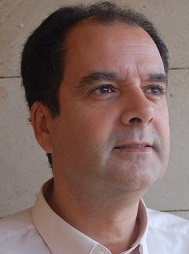Speaking in Tongues: The Many Languages of the Diamond Trade
October 06, 16
As a business sector and a subculture in its own right, the diamond trade has a language of its very own. At hotels and restaurants close to diamond bourses, you can hear dealers checking with friends and acquaintances whether they have still got that J color stone they mentioned the day before, or a VVS diamond, or a three-carater, two grainer or 10-point diamond. The merchandise is held in small paper envelopes called briefkes, while the descriptor “fancy” could refer to color or shape, and deals are sealed with the Hebrew word for luck, “mazal.”
What is perhaps even more interesting, and certainly impressive, is the need for members of the diamond business to be multi-lingual. Of course, the international language of the trade – as it is for just about every other business too – is English. That's a given. But travel around the diamond bourses and you will hear and see people with a command of at least two languages, often three, and sometimes four or more.
Perhaps the most impressive examples of people with an apparently effortless command of languages are to be found in Antwerp. Interview a diamond dealer and he will comfortably speak to you in English while taking calls in French and Flemish and, if he is Jewish, in Hebrew, too. However, it is not just in the diamond trade that this command of languages is apparent.
Go to a restaurant, a hotel, a museum or even just a sandwich bar in the vicinity of the diamond bourse, and make a request or place an order and you will be answered and served as if the person behind the counter had grown up in Britain, Holland and France simultaneously.
And the same largely applies to Israel as it does to Belgium, while in Mumbai and Hong Kong there is a similar level of multi-lingual ability.
As far as Israel and Belgium are concerned, the depth of language skills should not come as a surprise. Both are small countries with little or nothing in the way of natural resources. As a result, both are highly export dependent and have had to ensure their peoples have strong language ability. In Belgium's case, the country has long been at the crossroads of wars and the building up of empires, as well as their falls.
Israel, too, located in a largely hostile region, has had to look westward to export markets in Europe and the United States – as well as eastwards as relations have developed with the Asian giants China and India in the last quarter of a century. Although the country's love affair with all things American ensures English is very widely understood and spoken, it also has substantial numbers of people fluent in Russian, French, Spanish and other European and African languages. Attracting immigrants from all over the world on a continuous basis has also enabled it to create global business links.
So, the next time you are in the area of the diamond exchange in Antwerp, Ramat Gan or Mumbai, don't be surprised when you hear people effortlessly switching between languages as they order a sandwich, say hello to an overseas colleague, or answer a call from their office on their mobile phone all at the same time. It could be English, French, Flemish, Hebrew, Yiddish, Russian, Hindi, Gujarati, Mandarin, Cantonese or simply Diamondese.